
Many are unfamiliar with heart rate variability and why it’s relevant to mental health. Below, we cover the basics on this emerging gold-standard biomarker for mental health.
What is heart rate variability?
Heart rate variability is the variation in milliseconds between each consecutive heartbeat. A healthy heart does not tick evenly between each heartbeat like a metronome. Rather, there is constant variation in the amount of time between each heartbeat. For example, if your heart rate is 60 beats per minute (bpm), it’s not beating once every second like clockwork. Instead, the milliseconds between each heart beat vary, like the example below showing an interval of 754 milliseconds between two consecutive heartbeats, followed by 828 milliseconds, then 845 milliseconds, etc:
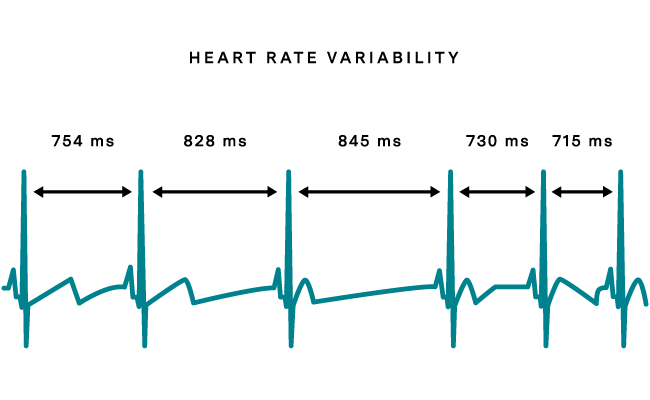
Another way to understand heart rate variability is to think about when you inhale versus exhale. As you inhale, your heart rate accelerates, which results in a shorter time interval between your heart beats. In contrast, as you exhale, your heart rate decelerates, which results in a longer time interval between heart beats. This variability in the length of time between heart beats, which is coordinated with your breathing cycle, is called respiratory sinus arrhythmia:
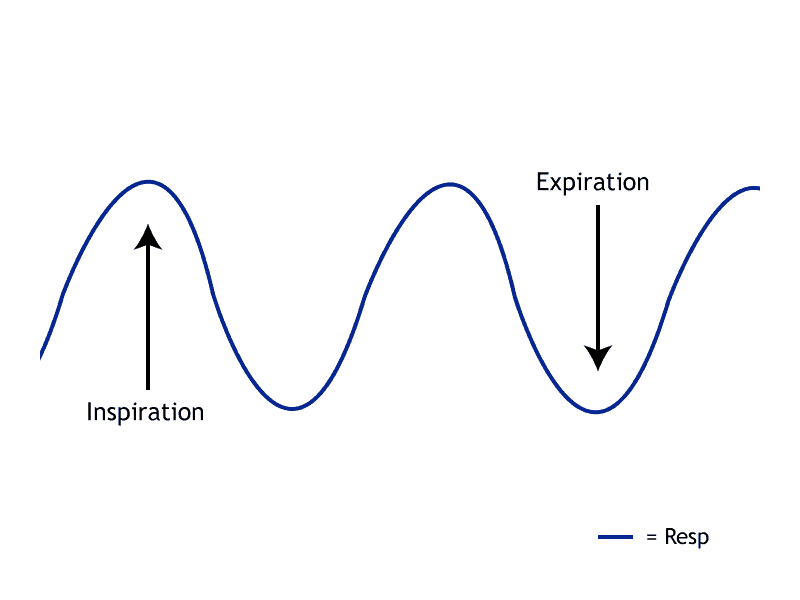
The degree of respiratory sinus arrhythmia can be used to indicate the degree of parasympathetic cardiac control. We’ll get more into that below.
What is the difference between heart rate variability and heart rate?
It’s important to distinguish between heart rate variability and heart rate. A common misconception: Low heart rate variability must be better, because it means my heartbeat is steady, and my body is relaxed. This incorrect assumption conflates resting heart rate with low heart rate variability. Heart rate is the number of times your heart beats per minute, while heart rate variability is the change in milliseconds between each consecutive heart beat.
Our heart needs to be able to adjust quickly depending on the situation, which high heart rate variability enables. For example, when you’re sitting by the campfire roasting marshmallows your heart rate may be at 60 bpm, but if a bear comes charging out of the woods, your heart rate needs to instantly rev up to 160 bpm, so you can quickly react. High heart rate variability means your heart can efficiently adapt depending on the situation.
How do you measure heart rate variability?
You are somewhat aware of when your heart rate changes, unlike your heart rate variability. For example, when you’re very nervous, you can tell your heart is beating faster, which is reflected in your pulse. In contrast, heart rate variability is less acutely experienced, and can’t be measured without the help of a tool, like an electrocardiogram (ECG or EKG) device that records the electrical activity of your heart. ECG-based measurements taken from the chest or torso, like the Lief Smart Patch, are shown to be the most clinically accurate when it comes to measuring heart rate variability.

The Lief Smart Patch can be unobtrusively worn on the torso underneath clothing all day long, so you can discreetly monitor your changing heart rate variability throughout the day as you engage in various activities.
What does your heart rate variability tell you about your autonomic nervous system?
Your autonomic nervous system sends signals to the rest of your body to either stimulate or relax different involuntary processes, like heart rate, blood pressure, breathing, and digestion. Arguing with your partner, eating a hamburger and fries for lunch, or hearing exciting news about your promotion all impact your autonomic nervous system.
Your body was made to dynamically adjust from second to second to respond to external inputs as quickly as possible. That modulation is regulated by your autonomic nervous system, which includes the sympathetic “fight or flight” response, and parasympathetic “rest and digest” response.
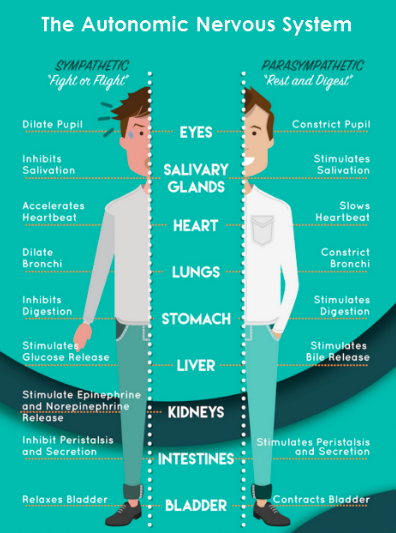
A useful analogy is to think of the sympathetic nervous system acting like a car’s gas pedal, amping up the body in response to perceived dangers. In contrast, the parasympathetic nervous system functions like a brake by calming the body down after the danger has passed. We need both of these functions to operate well. The greater the variability of your heart rate, the more readily your nervous system can shift gears between its sympathetic and parasympathetic modes, which is healthy.
Why is high heart rate variability better?
High heart rate variability indicates that the autonomic nervous system is balanced, which enables responding to many different types of external stimuli with flexibility and resilience. In contrast, low heart rate variability, indicates the autonomic nervous system is imbalanced — the sympathetic “fight or flight” nervous system response is operating in overdrive, and sending stronger signals to the heart than the parasympathetic “rest and digest” response.
Overall, low heart rate variability indicates that the body is stressed and not functioning optimally, which increases vulnerability to negative external triggers. Lifestyle factors like poor nutrition, lack of exercise, poor sleep quality, and stress can contribute to the imbalance of the autonomic nervous system, which is reflected in low heart rate variability.
Why is heart rate variability important for mental health?
Scientific studies have found a link between low heart rate variability and mental health concerns, like anxiety and depression, as well as cardiovascular disease and premature death. General dysregulation of the autonomic nervous system as indicated by low heart rate variability is associated with stress, anxiety disorders and other mental health concerns.

Can you increase heart rate variability?
Fortunately, there’s something you can do to train low heart rate variability higher. Biofeedback is a technique that enables you to learn how to change your physiological activity, like your heart rate variability, for the purpose of improving your health. Biofeedback devices like the Lief Smart Patch provide you with information about your physiological processes, enabling you to increase your awareness and feel empowered to exert control over your physical and mental processes.
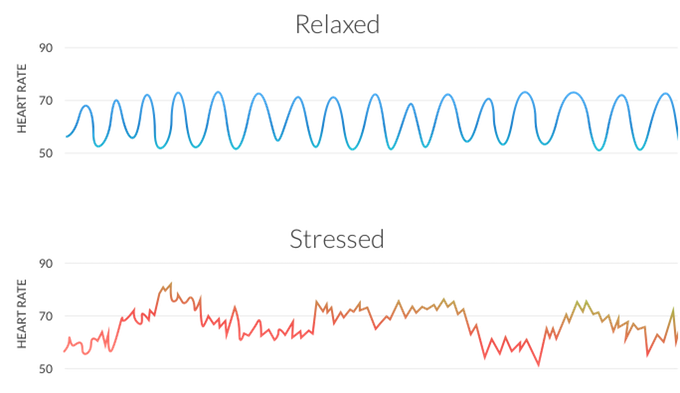
Heart rate variability biofeedback training can be used to effectively increase heart rate variability, and improve mental health treatment outcomes.

Does heart rate variability biofeedback training improve mental health outcomes?
Over the last two decades, there has been growing evidence supporting the use of heart rate variability biofeedback in treating a variety of psychiatric disorders and medical conditions, and enhancing performance. A systematic review of biofeedback for psychiatric disorders (e.g., anxiety disorders, depression, panic disorder, and PTSD) found that heart rate variability biofeedback significantly improved clinical symptoms in 70% of the studies reviewed.
In addition, a pilot study found that a brief heart rate variability biofeedback training was related to a significant decrease in trait anxiety. Echoing these findings, a 24-study meta-analysis indicated that heart rate variability biofeedback training resulted in large reductions in self-reported stress and anxiety.
The promise of heart rate variability
Decades of research highlight the importance of heart rate variability as an indicator of the overall health of the autonomic nervous system, as well as a biomarker of mental health. The increasing access to wearable devices that monitor and help train heart rate variability higher enable millions of people around the globe to add this valuable tool to their well being practice, and be empowered to sustainably improve their mental health.


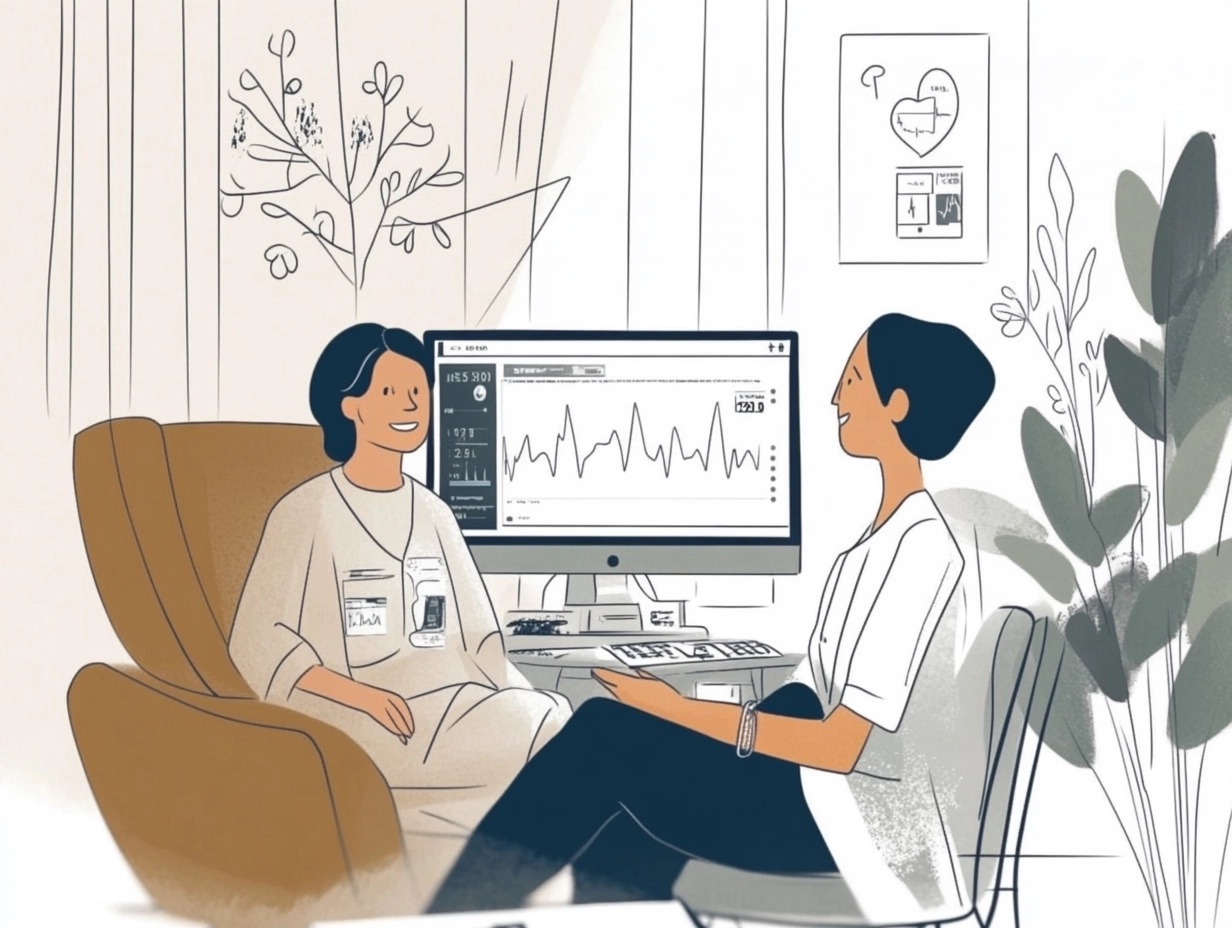


Leave a Reply
You must be logged in to post a comment.